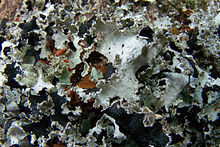
The Parmeliaceae is a large and diverse family of Lecanoromycetes. With over 2700 species in 71 genera, it is the largest family of lichen-forming fungi. The most speciose genera in the family are the well-known groups: Xanthoparmelia, Usnea, Parmotrema, and Hypotrachyna.

Cetraria is a genus of fruticose lichens that associate with green algae as photobionts. Most species are found at high latitudes, occurring on sand or heath, and are characterised by their "strap-like" form with spiny lobe edges. The lobes can range from narrow and linear to broader and flattened, often forming loose or densely packed cushions. Their distinctive spiny margins serve both a defensive role and aid in vegetative reproduction through fragmentation. The genus was created by Erik Acharius in 1803 and belongs to the large family Parmeliaceae. While originally a species-rich genus, taxonomic revisions since the 1960s have split many species into new genera, though the exact circumscription remains debated among lichenologists.
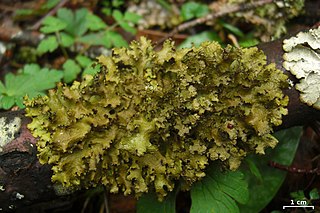
Tuckermannopsis is a genus of foliose lichens in the family Parmeliaceae.

Cetrelia is a genus of leafy lichens in the large family Parmeliaceae. They are commonly known as sea-storm lichens, alluding to the wavy appearance of their lobes. The name of the genus, circumscribed in 1968 by the husband and wife lichenologists William and Chicita Culberson, alludes to the former placement of these species in the genera Cetraria and Parmelia.
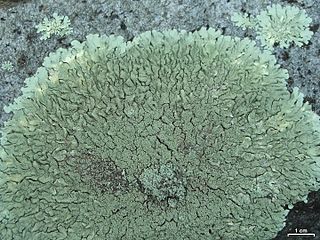
Xanthoparmelia is a genus of foliose lichens in the family Parmeliaceae. This genus of lichen is commonly found in the United States, South America, southern Africa, Europe, Australia, and New Zealand.

Allantoparmelia is a genus of lichenised fungi in the large family Parmeliaceae. It is a genus of only three currently accepted species. All three Allantoparmelia lichens have a foliose growth form. They appear to be a very slow growing group of lichens, with a mean annual thallus diameter increase of only 0.23–0.35 mm per year.

Esslingeriana is a fungal genus in the family Parmeliaceae. The genus is monotypic, containing the single foliose lichen species Esslingeriana idahoensis, commonly known as the tinted rag lichen. It is found in northwestern North America.
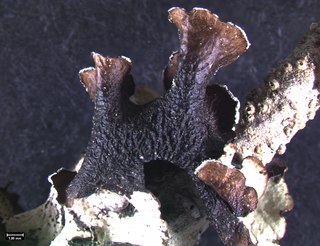
Platismatia wheeleri is a species of foliose lichen in the family Parmeliaceae. Found in western North America, it is characterized by its whitish, smooth thallus and asexual reproduction through soredia. This lichen species is primarily found in western intermontane North America, from southern British Columbia to Washington, Idaho, and Oregon. It has also been discovered in southern California and the Tatra Mountains of Slovakia.
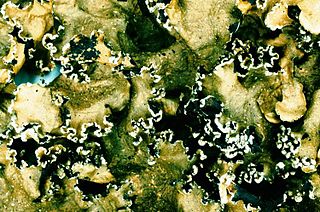
Cetrelia cetrarioides is a foliose lichen belonging to the family Parmeliaceae.

Cetrelia chicitae is a species of foliose lichen in the family Parmeliaceae. It is found in eastern Asia, North America, and Europe, where it grows on mossy rocks and tree trunks.
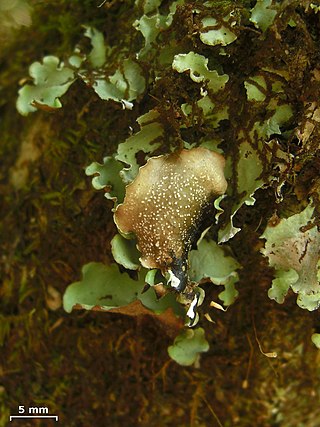
Cetrelia monachorum is a species of foliose lichen in the family Parmeliaceae. It was first described scientifically in 1930 by Alexander Zahlbruckner as a species of Parmelia. Husband and wife lichenologists William and Chicita Culberson transferred it into the genus Cetrelia in 1977. It is found in Asia, Europe, and North America.
Platismatia formosana is a species of corticolous (bark-dwelling), foliose lichen in the family Parmeliaceae. Found in the mountains of Taiwan, it was first formally described as a species of Cetraria in 1933 by Alexander Zahlbruckner. William and Chicita Culberson transferred it to the genus Platismatia in 1968. The species epithet formosana refers to its distribution, as "Formosa" is the name formerly used in Western literature to refer to Taiwan. It contains the lichen products atranorin, caperatic acid, and an unidentified yellow pigment.
Platismatia erosa is a species of corticolous (bark-dwelling), foliose lichen in the family Parmeliaceae. Found in Asia, it was formally described as a new species in 1968 by William and Chicita Culberson. The species epithet erosa refers to the "eroded" quality of the reticulations on the upper thallus surface.
Platismatia lacunosa is a species of corticolous (bark-dwelling), foliose lichen in the family Parmeliaceae. Known predominantly from western North America, it reproduces primarily through sexual means, which is uncommon in the genus. The species is distinguished by its ridged surface and large, folded apothecia.
Platismatia interrupta is a species of foliose lichen in the family Parmeliaceae. Found in southern Russian Far East, and Japan, it was formally described as a new species in 1968 by William and Chicita Culberson. The species epithet interrupta refers to the indistinct and discontinuous reticulation of the upper thallus surface. The lichen of one of the most common foliose macrolichens in Japan, particularly at high elevations, where it grows on tree trunks and on boulders. The authors called it the "Far Eastern equivalent" of the common and widespread Platismatia glauca, which is absent in Asia.
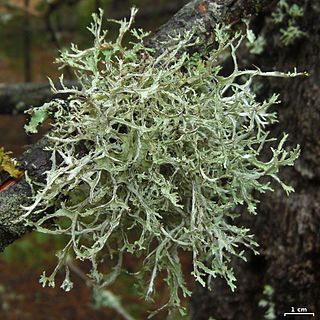
Platismatia stenophylla is a species of corticolous (bark-dwelling), foliose lichen in the family Parmeliaceae. It is found in western North America, from Vancouver Island south to central California, usually close to a shore. The lichen is distinguished from others in its genus by its narrow, linear lobes and primarily sexual reproduction.
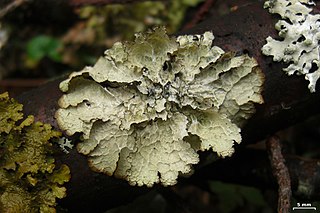
Platismatia tuckermanii is a species of corticolous (bark-dwelling), foliose lichen in the family Parmeliaceae. It is endemic to Eastern North America and is distinguished by its broad, loosely attached lobes and primarily sexual reproduction.

Platismatia herrei is a species of corticolous (bark-dwelling), foliose lichen in the family Parmeliaceae. It was first formally described as a species of Cetraria in 1968 by lichenologist Henry Imshaug. William and Chicita Culberson transferred it to the genus Platismatia in 1968. The lichen is found in western North America, ranging from southern Alaska to central California. It is distinguished from other members of its genus by the isidia that fringe the edges of its linear lobes; the Culbersons described it as "one of the most beautiful and intricately formed species in the genus".
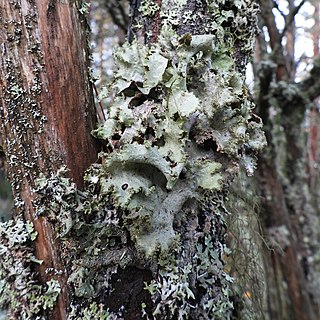
Platismatia glauca is a common and widespread species of corticolous (bark-dwelling), foliose lichen in the family Parmeliaceae.
